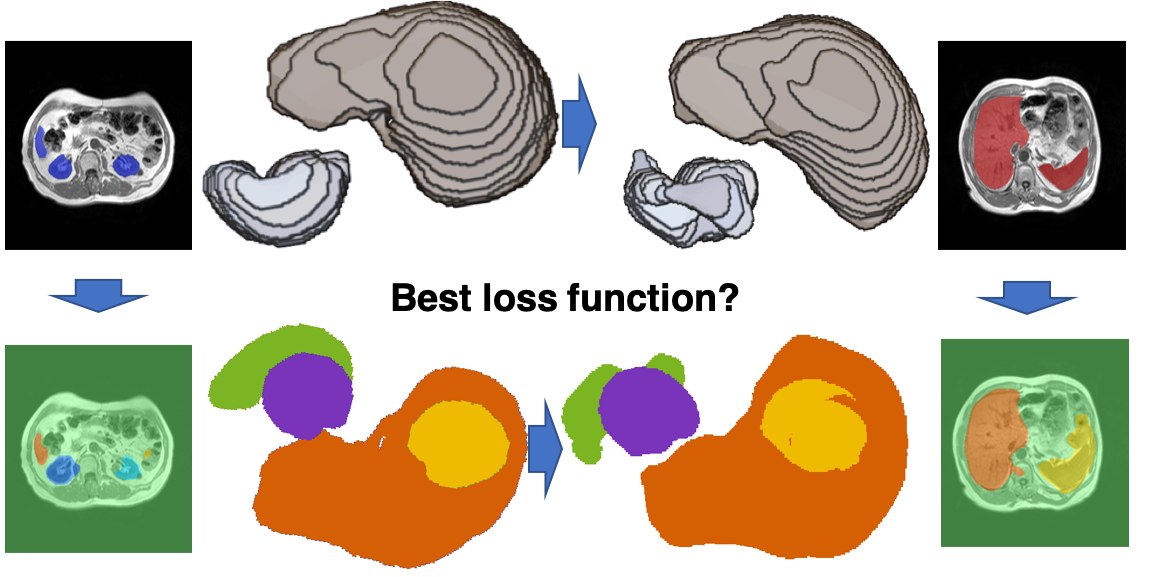Segmentation of Magnetic Resonance Images (MRI) of abdominal organs is useful for analysis prior to surgical procedures and for further processing. Deep Learning (DL) has become the standard, researchers have proposed improvements that include multiple views, ensembles and voting. Loss function alternatives, while being crucial to guide automated learning, have not been compared in detail. In this work we analyze limitations of popular metrics and their use as loss, study alternative loss variations based on those and other modifications and search for the best approach. An experimental setup was necessary to assess the alternatives. Results for the top scoring network and top scoring loss show improvements between 2 and 11 percentage points (pp) in Jaccard Index (JI), depending on organ and patient (sequence), for a total of 22 pp over 4 organs, all this being obtained just by choosing the best performing loss function instead of cross-entropy or dice. Our results apply directly to MRI of abdominal organs, with important practical implications for other architectures, as they can be applied easily to any of them. They also show the worth of variants of loss function and loss tuning, with future work needed to generalize and test in other contexts.

